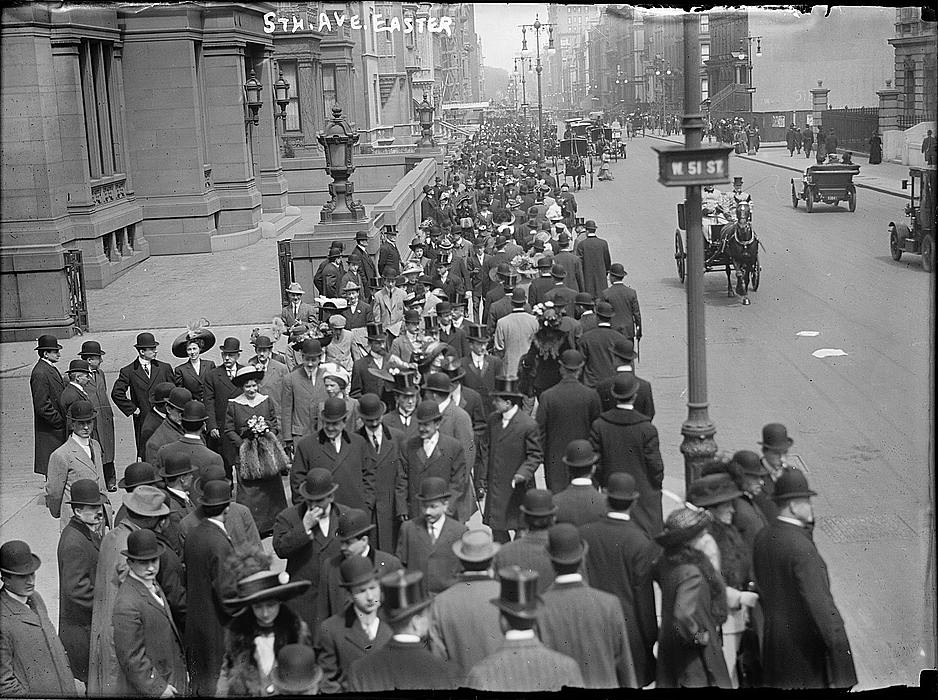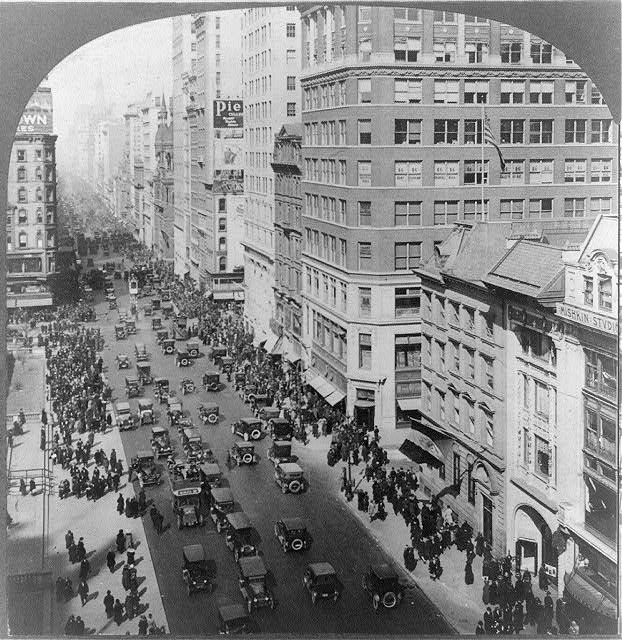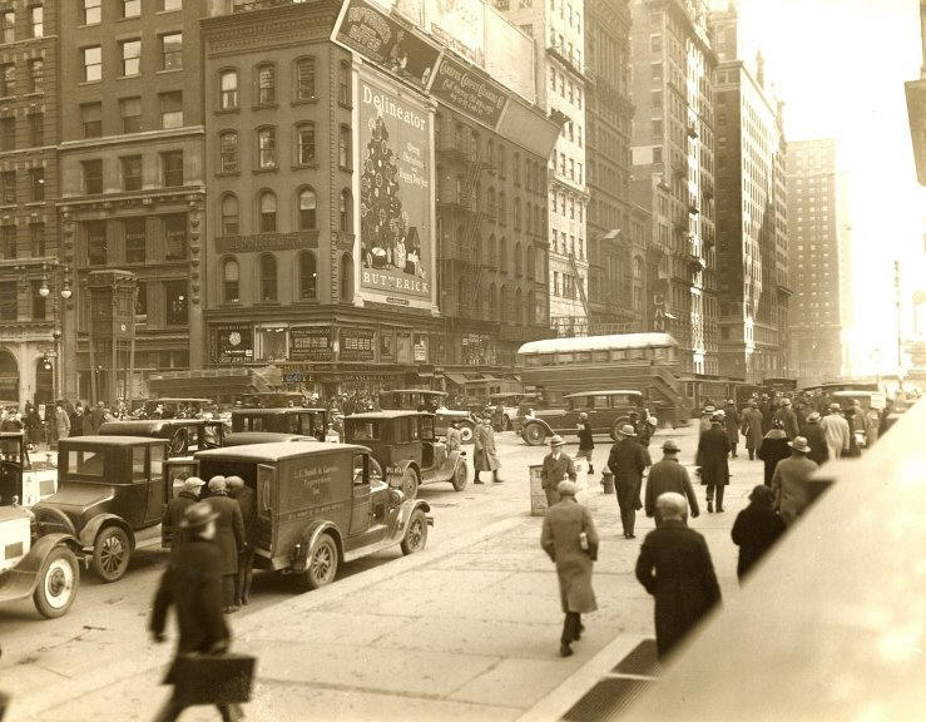Title: A Stroll Down Memory Lane: The Easter Parade on 5th Avenue, 1880-1950
by Shannon Mulholland & Richard Zampella

The Easter Parade on 5th Avenue in New York City holds a storied history that stretches back over a century. What began as a simple tradition among the city’s elite in the late 19th century evolved into a grand spectacle, attracting visitors and participants from all walks of life. From the 1880s to the mid-20th century, the Easter Parade became synonymous with fashion, elegance, and community spirit, shaping the cultural landscape of New York City.
In the late 1800s, New York City’s social scene was vibrant and bustling. The Easter Parade emerged as a way for the city’s upper class to see and be seen, showcasing their latest springtime attire and extravagant hats. Fifth Avenue, with its wide boulevards and majestic buildings, provided the perfect stage for this annual display of wealth and style. As horse-drawn carriages and later automobiles paraded down the avenue, spectators gathered to marvel at the fashionable ensembles and elaborate headwear.
By the turn of the century, the Easter Parade had grown in popularity, attracting not only the elite but also middle-class New Yorkers eager to participate in the festivities. Immigrants from various cultural backgrounds added their own flair to the event, infusing it with a diverse array of customs and traditions. The parade became a reflection of the city’s melting pot ethos, celebrating its rich tapestry of cultures and identities.

During the early 20th century, the Easter Parade reached its zenith, drawing crowds of hundreds of thousands. It became a symbol of hope and renewal, especially during the challenging years of World War I and the Great Depression. Despite economic hardships, New Yorkers continued to gather on 5th Avenue, finding solace and joy in the shared experience of the parade.
The interwar period saw the Easter Parade evolve further, as fashion trends shifted and societal norms began to change. Women’s attire became more streamlined, reflecting the influence of the Jazz Age and the growing independence of women. Flapper dresses, cloche hats, and art deco accessories adorned parade-goers, signaling a departure from the ornate fashions of the past.
The Easter Parade of the 1940s was marked by a sense of patriotism and unity as the nation rallied behind the war effort during World War II. American flags and military uniforms were a common sight along 5th Avenue, serving as a poignant reminder of the sacrifices made by servicemen and women overseas. Despite the somber backdrop of war, the parade remained a cherished tradition, providing a brief respite from the hardships of daily life.

As the 1950s dawned, the Easter Parade continued to captivate audiences, albeit with a more modern sensibility. Post-war prosperity brought renewed enthusiasm for fashion and glamour, with Hollywood stars and celebrities making appearances at the parade. Television coverage brought the spectacle into homes across the country, further cementing its status as a cultural institution.
In conclusion, the Easter Parade on 5th Avenue in New York City evolved from a modest gathering of the elite into a grand celebration of fashion, diversity, and community spirit. From its humble beginnings in the 1880s to its heyday in the mid-20th century, the parade reflected the changing times and values of American society. Though the nature of the parade may have shifted over the years, its enduring legacy continues to inspire awe and admiration to this day.
Easter Parade in New York City from Richard Zampella & Shannon Mulholland
Check out: Inside High Noon & Cooper & Hemingway: The True Gen